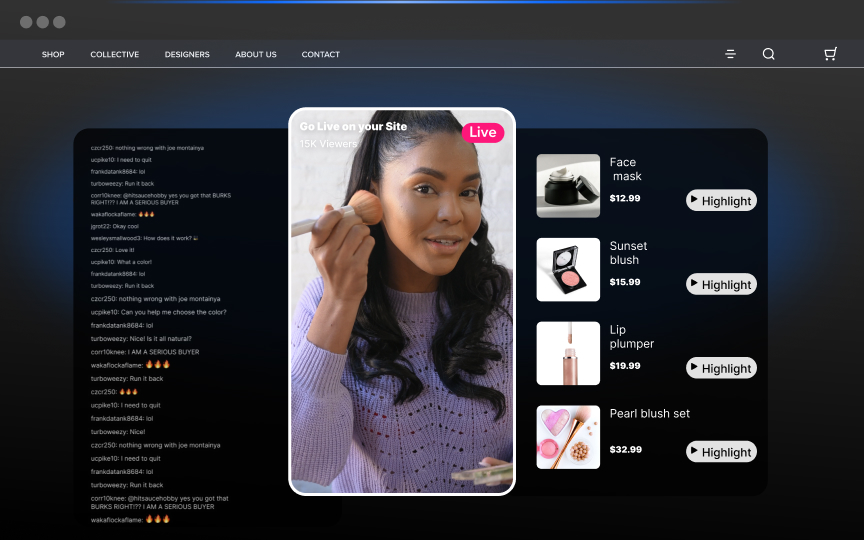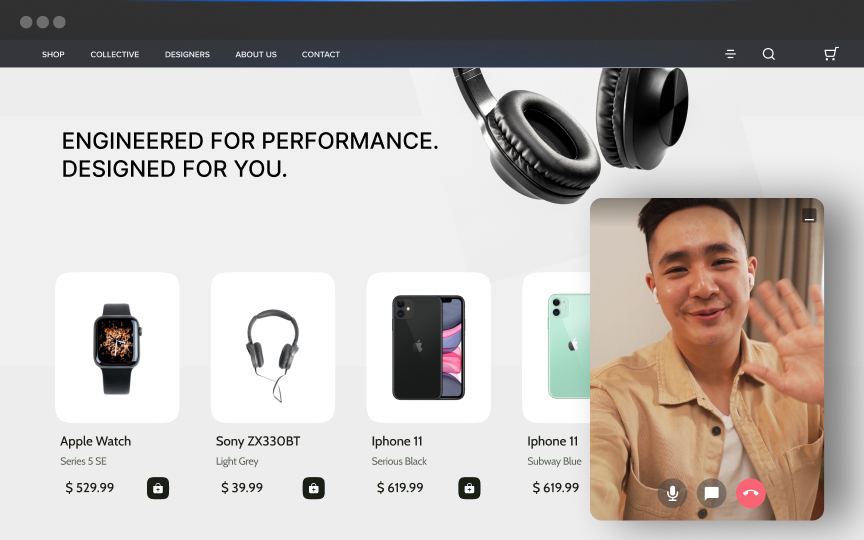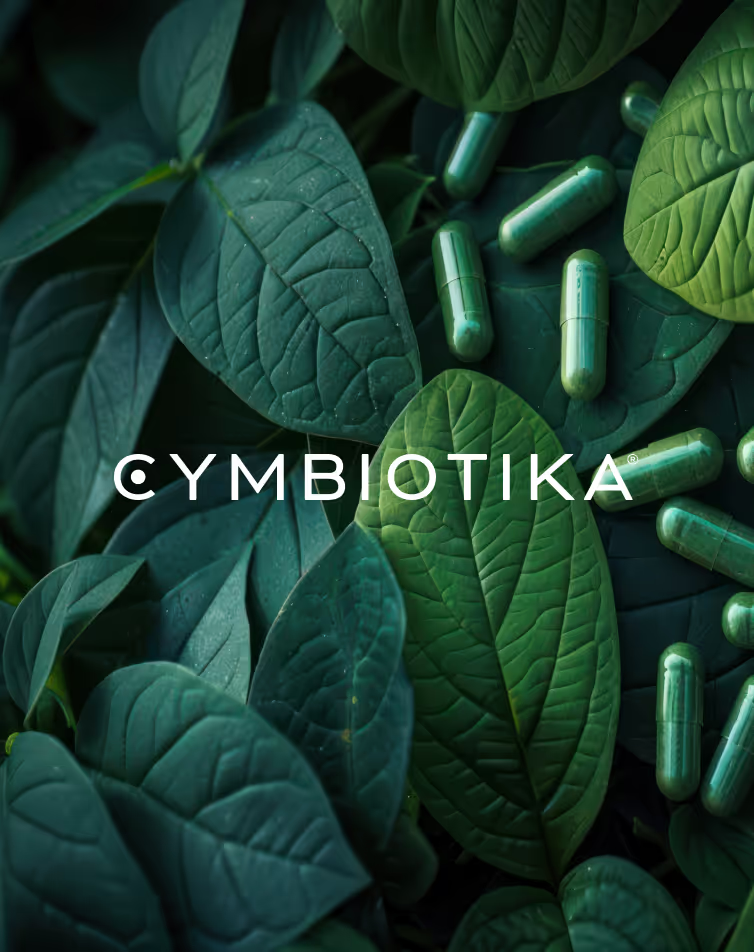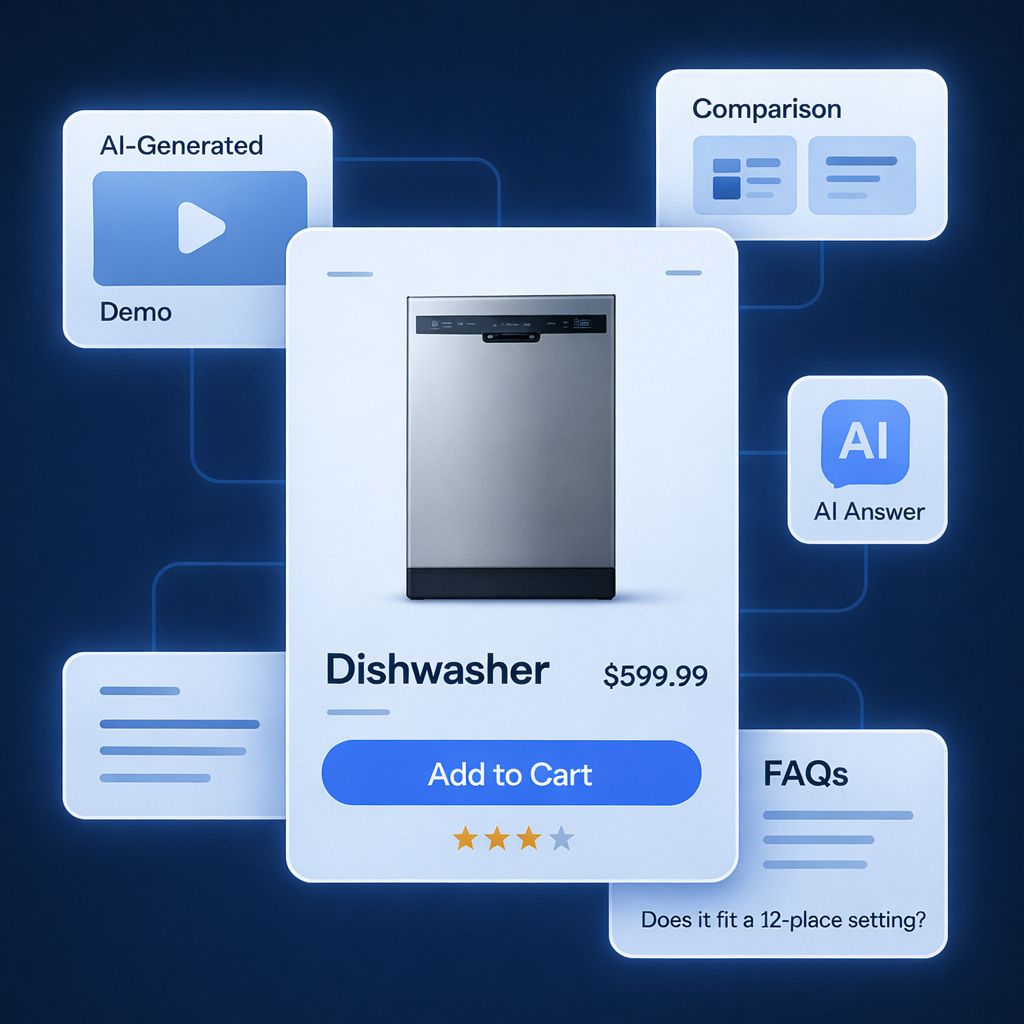In the world of online beauty sales, it's key to raise conversion rates for ongoing success. Beauty brands need to not only bring in traffic but turn those visitors into regular customers. This process, known as conversion rate optimization (CRO), is vital.It's important to address customer worries, like skin reactions or whether a product will suit them. By using detailed descriptions, top-notch images, and interactive tools, sales for beauty products can soar.Also, using strategies like A/B testing can lead to big wins. For example, an organic deodorant brand saw sales jump by more than 21%1. Additionally, the fast-growing subscription market, which expands by over 100% yearly, offers many chances for growth1.
Key Takeaways
- Addressing customer objections directly can improve conversion rates.
- Utilizing A/B testing to understand customer preferences leads to better sales outcomes1.
- High-quality product images and user-generated content are critical2.
- Subscription models can reduce customer inquiries and complaints while increasing revenue1.
- Customer reviews and testimonials build trust and justify product pricing.
- Leveraging social media, particularly TikTok, can drive brand awareness and conversions2
Conversion Rate Optimization for Beauty eCommerce
Conversion Rate Optimization (CRO) is crucial for beauty eCommerce brands. It's about making the shopping experience better to increase sales and loyalty. In the competitive online beauty market, it's key to use e-commerce CRO strategies. This helps beauty brands turn more website visitors into customers, growing their income.For most beauty stores, the average conversion rate is about 2.5-3%. But, aiming for higher, like 15%, can seriously lift purchases and income3. If a website has 1,000 visitors a day and a 5% conversion rate, that means 50 purchases a day. Boosting the rate to 15% could lead to 150 daily purchases. This jump increases sales and revenue by 300%4.Understanding customer behavior is key to CRO. Tools like Google Analytics and BigCommerce Analytics help. They give insights into what visitors do, how long they stay, where they come from, and their buying actions5.Using strong optimization strategies is important. Adding detailed product pages, guides, and ingredient information can build trust. Including videos can make the product clearer to customers4. Answering common questions in a FAQ section can make buying easier.In conclusion, CRO is vital for improving beauty eCommerce stores. It leads to more sales and success online. By carefully planning and analyzing, beauty brands can offer an easier and more enjoyable shopping experience.
Understanding Customer Concerns and Objections
Beauty products are very personal. This means customers often have concerns that stop them from buying. Brands need to address these worries quickly and clearly. Doing this builds trust and can boost sales.
Common Customer Questions
Customers usually ask about ingredients and if the product will work for their skin. They also wonder about the true color and how to use the product. These questions are crucial. Over 70.19% of shopping carts get left behind6 if these concerns aren't fixed.
Addressing Objections Through Detailed Product Information
To increase sales, it's key to clear up any doubts customers have. Share everything about your product. List ingredients, explain how to use it, and say who it's for. Being clear and open helps customers feel sure about buying."Transparent and responsive communication fosters trust and can lead to increased conversions," notes a recent study.Handling questions well can make customers more interested. Brands with thorough product details and quick answers make shoppers feel cared for. This trust can improve your online store's success.
Importance of High-Quality Product Images and Videos
Product images and videos are super important in online shopping, especially for beauty items. They help shoppers feel like they're seeing the product in person. For example, about 90% of shoppers on Etsy say they're more likely to buy something if the pictures are good7. This shows how good images can make people want to buy something.Big fashion names like Kate Spade and Banana Republic show off their products from many angles. They also use zoom features so customers can look at details closely8. Adding pictures from users helps too. It shows the products being used in real life. In fact, 71% of shoppers in the U.S. feel more inclined to buy something if they can see pictures from other customers8.Videos take showing products to a whole new level. They demonstrate how to use the product and what it’s good for. Events like livestream shopping can really boost sales, sometimes by ten times more than usual8. Also, people are 85% more likely to buy something after watching a video about it7. Videos are a powerful tool for selling beauty products.New tech like 360-degree images and AR make shopping online even better. Pages with 360-degree images see a 35% boost in adding items to carts. Conversion rates go up by 22%7. Also, 66% of online shoppers say 3D and AR visuals make them more confident to buy9. These cool features improve the shopping experience and can lead to fewer returns. They help because shoppers get a better sense of what they're buying9.So, for beauty brands wanting to succeed online, great product images and videos are a must. Using advanced visualization methods, companies can mimic the in-store experience. This builds trust and leads to more sales. Clearly, how products are shown online matters a lot for marketing beauty products.
Leveraging Customer Reviews and Testimonials
Customer reviews and testimonials are key in the beauty e-commerce world. They build trust and shape buying choices. A 2017 survey found that 85% of people believe online reviews as much as personal advice. This shows how reviews influence what consumers do10. Plus, showing reviews can boost sales conversions by 270%, marking their role in e-commerce success10.In a tight race, positive feedback from customers can change the game. When the Three Wolf Moon T-shirt got a funny review in 2008, sales soared. This proves how effective customer feedback can be10. Shopper Approved discovered in 2021 that reviews are among the top three factors driving Amazon's organic traffic and conversions10.It’s vital for beauty brands to inspire their customers to post reviews. Studies show that products with 50 or more reviews see a 4.6% jump in conversions11. Plus, 63% of shoppers prefer buying from sites with user reviews11. Showing all reviews, good or bad, can boost trust and loyalty. Brands that address negative comments gain favor with over 45% of customers11.Beauty e-commerce sites should realize the sales boost from customer testimonials. Indeed, reviews can lead to an average sales uplift of 18%. And, product pages with reviews see 3.5 times more conversions11. Clearly, using user reviews and testimonials wisely can greatly affect brand success.
Implementing a Subscription Option to Drive Loyalty
Beauty subscription models are changing how brands connect with customers. They make shopping effortless by sending favorite products regularly, no need for manual orders. This convenience builds customer loyalty by ensuring they always have their preferred products, along with personalized experiences.
Key Benefits of Subscription Models
Many beauty companies are seeing great results with subscription plans. For instance, Kopari gives a 10% discount to subscribers, keeping customers coming back12.Y'OUR and Proven Skincare focus on custom formulas that cater to individual skincare needs, making customers more likely to stay loyal.Subscription boxes from Ipsy and Birchbox bring new beauty products right to your door. This easy access to new items, along with special discounts, keeps customers interested and makes them buy more. The benefits of saving money and discovering new products encourage customers to stick with their favorite brands.
Ensuring Clarity on Subscription Terms
To avoid customer confusion, beauty brands must be clear about subscription details. Information about delivery, managing orders, canceling, and perks should be straightforward. Brands like Kiehl's and Myro show that clear communication leads to happier customers and keeps them subscribed. Myro even offers exclusive benefits that customers love.In the e-commerce world, easy-to-understand subscriptions lead to more customer loyalty. Clear, transparent terms make customers feel secure, reducing cancellations and boosting loyalty. Subscription models that prioritize personalization and openness are top strategies for retaining customers.Beauty brands that refine their subscriptions can better meet customer wants and needs. As online shopping grows, focusing on clear, customer-friendly models is key for long-term success and loyalty.
Personalizing Customer Experiences through Data
Beauty e-commerce is super competitive. To stand out, personalized shopping experiences really help. By using data, brands can create shopping that feels made just for you. This turns one-time shoppers into loyal fans.Take Babor, a luxury skin-care brand from Germany, for example. They use AI tools like the Skin Advisor and Skin Coach. These tools learn about you to suggest the right products. Because of this, customers tend to buy more and stick around longer. This shows how personalized care based on customer data boosts sales for beauty brands source13.About 80% of people will likely shop more with brands that get them. This points out how key personalized service is13. Also, if brands are weird with your data, 65% of customers will stop buying from them. It shows how important it is for brands to be open about how they use your info13.McKinsey found that personalization could up revenue by 40%14. Customers happy with the shopping experience might spend 140% more than unhappy ones, per Harvard Business Review. It proves personal touches can lead to more sales14.Personalized videos are another cool way to engage customers. They can boost conversions by 16 times more than generic videos14. With AI, companies can craft videos for you, using details like your name and what you like to shop for14.For the best outcome, it’s wise to have clear goals and use the right data. Keep your videos short and fun. Talk like you would with a friend and make your point clear. Watching how well these videos do is also key14.To sum up, using data to tailor the shopping experience benefits everyone. It helps brands stand out and grow. And it makes customers feel valued, encouraging them to come back. This approach turns shopping into a journey that feels just right for each customer.
Utilizing Social Proof to Build Trust
In the beauty eCommerce world, using social proof is key for building trust and increasing sales. By showing reviews and user-generated content, brands can seem more credible and reliable.Online reviews are super important for eCommerce. They’re trusted by 88% of shoppers, just like recommendations from friends. Showing reviews can boost sales by 270%15. They help shoppers feel good about their choices.Photos and videos from customers also help build trust. Because they’re real and relatable, 79% of shoppers say this content sways their buying choices16. Plus, it makes your brand more engaging and can even improve your search rankings15.Getting nods from influencers and experts is another way to win trust. Endorsements from beauty pros or celebrities can make your brand stand out. They help convince people to buy your products1Real, authentic social proof, like reviews, user content, or endorsements, makes your online presence stronger and more trustworthy.Also, showing how many people are visiting or what they’re buying can spur others to buy, too. For example, one online store doubled its sales thanks to Wiser Notify’s instant notifications17. This kind of social proof doesn't just boost sales but also keeps people from leaving their carts unfinished17.But social proof isn’t only for attracting new customers. It also helps keep the ones you have. Happy customer stories encourage others to keep coming back. This way, beauty eCommerce brands can build lasting bonds with their customers, driving growth over time.
Improving Site Speed and Mobile Optimization
Boosting an e-commerce site's performance is key, especially in terms of e-commerce site speed and mobile friendliness. Quick site performance is vital for engaging users and increasing sales.
Impact of Site Speed on User Experience
Websites loading in two seconds or less see a 15% boost in mobile conversions18. Each second faster in loading can up conversion rates by 17%18. This shows how crucial speed is for better engagement and sales.37% more people are likely to buy from mobile-friendly sites18. Also, 53% of mobile users leave if loading takes over three seconds18. Fast loading times are crucial to keep users interested and lower bounce rates.Learn more about improving site speed and mobile.
Mobile Optimization Strategies
With over 5.22 billion mobile users worldwide, making your site mobile-friendly is a must19. A responsive layout can boost traffic by 25%, as Time Magazine found18. Walmart.ca saw a 20% increase in conversions from using responsive design18.60% of e-commerce sales are through mobile19. Enhancing mobile site experiences boosts satisfaction and sales. A buy-now-pay-later option could also increase the typical 1.82% mobile e-commerce conversion rate19.Simple navigation and efficient checkout are key for mobile shopping. A well-placed call-to-action, with plenty of white space, can increase conversions by 232%18. These steps aim to fulfill consumer desires for fast, easy mobile shopping.
Using A/B Testing to Determine Effective Strategies
For beauty eCommerce brands, A/B testing is vital for making smart decisions. It helps brands know what works best on their websites, leading to more sales. For example, Amazon boosted its sales by 27% by testing different product images20. Wayfair also saw a 47% jump in sales by using lifestyle pictures for their rugs20.Brands that test and tweak their websites can improve how users feel on their site. By changing where they place "Buy Now" buttons or how they describe products, they can get more people to buy. Warby Parker, for example, increased sales by 12% just by showing glasses on a model's face20. This shows how important pictures are in getting customers to buy.Testing how long product descriptions are can also make a big difference. ASOS found that shorter descriptions boosted sales by 5.8%20. Moosejaw saw a 30% sales increase by changing description lengths20. By using A/B testing, beauty brands can write better descriptions, as Kiehl's did to raise sales by 22%20.Trying out different page designs can also make shopping easier and more fun for customers21. Sephora increased sales by 15% just by moving their reviews section up20. This shows how placing trust-building elements like reviews can affect sales.Using A/B testing regularly helps find problems like why people leave the site21, why they don't finish buying21, and how to set prices21. This kind of testing is key to improving websites. It lets beauty brands keep getting better and stay competitive.To learn more about A/B testing and see real examples, check out this source20.
How To Increase Conversion Rates For Beauty eCommerce Brands?
To boost conversion rates in beauty eCommerce, focus on obvious opportunities and do in-depth research. Finding growth areas and thorough research can majorly better the customer experience and conversion rates.
Identifying Low-Hanging Fruits
Addressing easy opportunities can significantly improve conversion rates. For example, make product pages better by using high-quality images and detailed descriptions. This enhances shopper engagement. Making the checkout process easier can decrease cart abandonment, a big issue at 67% for beauty brands. This can quickly boost conversion rates22. Also, improving on-site search helps customers find products faster.
Utilizing Quantitative and Qualitative Research
Mixing quantitative data and qualitative feedback gives a full view of the customer journey. Analyzing conversion rates, around 5.2% for beauty brands22, reveals key metrics. At the same time, feedback from customer surveys offers insights into their likes and issues. For instance, in 2020, beauty brands increased their average order value by 20% with better subscription models. This highlights the value of understanding customer behavior23. Using a research-driven strategy allows brands to customize their products and marketing. This ensures they follow e-commerce best practices, leading to ongoing improvement and customer happiness.
Highlighting the Outcome and Benefits of Products
In the beauty eCommerce world, brands need to show how their products make a difference. It's key to tell customers about the benefits of beauty products. This creates a strong emotional link that shows how these items can improve life. Outcome-focused marketing talks more about results than what's in the products. For instance, a facial serum isn't just mixed ingredients. It's a way to feel more confident with healthier, glowing skin. This method helps people see the worth of buying, making them more eager to spend money emotionally and with their wallets.When brands showcase the emotional and physical perks of their products, they connect with their audience's hopes and dreams. Imagine a hair product that makes dull hair vibrant again. It makes users feel more beautiful and confident. Marketing that focuses on outcomes like this builds a strong relationship between customers and brands.The beauty market is set to hit $716 billion by 2025, showing big opportunities24. This growth leans heavily on an impressive online presence and smart sales tactics. The share of online sales for beauty brands might increase to 23.3% by 202524.Online stores hitting conversion rates above 3% are doing great25. To reach these numbers, beauty companies must highlight their products' key benefits. By using stories and pictures that touch hearts, they can draw in consumers. This emotional bond boosts interest and makes people want to buy.Today, the beauty industry must focus on outcomes, not just products. By emphasizing better beauty, confidence, and self-expression, eCommerce brands can appeal emotionally. This approach improves conversion rates and keeps customers coming back.
Conclusion
To improve conversion rates, beauty e-commerce brands need a well-rounded plan aimed at their customers' needs. Even though the average conversion rate for eCommerce is only 1.82%26, top-quality images, clear info about products, and using customer reviews can make a big difference. Stores like ASOS also show how important good return policies are for winning customers over26.Making shopping easy on mobiles is key too. With 60% of online shopping happening on phones26 and over half the sales coming from them26, sites need to load quickly and be easy to use. A delay in loading time can drop sales by 20%27. Adding personal touches and subscription options can also help keep customers coming back.For lasting growth, beauty brands have to keep up with data analysis and testing new ideas. Tools like Google Analytics make it easier to see what's working and what's not28. By staying current with their product descriptions and strategies, beauty e-commerce sites can thrive in this competitive market.
FAQ
What are the best strategies for increasing conversion rates for beauty eCommerce brands?
To boost conversion rates for beauty eCommerce brands, start by providing detailed descriptions of your products. Include high-quality images and videos. Also, use customer reviews and testimonials to your advantage. You can offer subscription options and personalize experiences through data. Improve site speed, optimize for mobile users, and run A/B tests.
How can beauty eCommerce brands effectively address customer concerns and objections?
Addressing customer concerns is key. Offer thorough information on ingredients, how to use the product, and application methods. Clearing up common misconceptions helps build trust and boosts conversion rates.
Why are high-quality product images and videos important in beauty eCommerce?
Quality visuals are vital. They help bridge the gap left by online shopping’s lack of touch and feel. Showing products from many angles and in detail reduces doubts, which helps improve sales.
How can customer reviews and testimonials impact beauty eCommerce sales?
Reviews and testimonials act as proof that others trust your products and brand. When potential customers see positive feedback, they feel more confident in their purchasing decisions. This trust can lead to more sales.
What are the benefits of implementing a subscription option for beauty eCommerce brands?
Subscription services boost loyalty and encourage more sales. By clarifying subscription details, you avoid any confusion. This makes customers happy and can save money on attracting new buyers.
How does data-driven personalization enhance the customer experience in beauty eCommerce?
Data-driven personalization means giving shoppers a unique experience. Recommend products and offer discounts that speak directly to their needs. This makes shopping more engaging and increases the chances of making a sale.
What role does social proof play in building trust for beauty eCommerce brands?
Social proof, like reviews and influencer endorsements, strengthens trust in your brand. Displaying these endorsements can sway shoppers' purchasing decisions. This trust can lead to more sales for your brand.
How does improving site speed and mobile optimization affect user experience in beauty eCommerce?
Faster sites and mobile-friendly designs create a smoother shopping experience. This reduces the chance that people will leave your site and helps boost sales. Quick, easy access to shopping is key.
Why is A/B testing crucial for beauty eCommerce brands?
A/B testing is essential for learning what works best on your site. By testing different elements, you can see what your customers prefer. This leads to smarter decisions and more sales.
What are 'low-hanging fruits' in the context of beauty eCommerce conversion rate optimization?
'Low-hanging fruits' are simple ways to increase sales, like tweaking product pages or making checkout easier. Finding these through research helps refine your site for better A/B testing and shopping experiences.
How can beauty eCommerce brands highlight the outcome and benefits of their products?
Highlight how your products make life better. Focus on the end results like improved confidence and beauty. When customers understand the benefits, they are more likely to buy.
Unlock Exclusive Insights
By submitting this form, you agree to Firework's privacy policy and consent to receive personalized marketing communications. You can unsubscribe at any time.




























